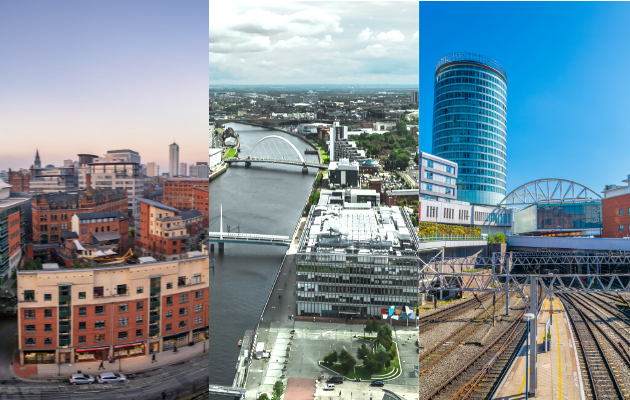
In advance of the Government’s forthcoming Levelling Up White Paper, this briefing sets out what the levelling up agenda should aim to achieve and a strategy for achieving it.

The ‘Medici effect’ of bringing people of different backgrounds together to encourage innovation is just another way of describing a city
It’s all gone very quiet on the levelling up front. And the recent political turbulence raises questions not as to when the Levelling Up White Paper will be published, but if it will even be published at all if there is a change in Prime Minister. If it is published, then reports say it will be influenced by the ‘Medici effect’. If true, then we should expect a very city-focused publication.
The Medici effect is the idea that bringing people together from different disciplines sparks creativity and innovation, which improves growth, and this growth becomes self-reinforcing.
This, of course, fits the description of what a successful city does. The Renaissance that the Medici effect is given credit for creating didn’t happen in rural Tuscany, it happened in Florence. And this is what the terms ‘agglomeration’ and in particular ‘knowledge spillovers’ are referencing – the extra benefit you get when bringing people together.
Implicitly this line of thinking also goes against the idea of creating clusters of specific industries, an idea that has been a long-time favourite in economic development circles. This idea espouses the creative clash between disciplines, rather than focusing on one thing. And again, this is what successful cities do well. Sure, London has a big financial sector, but it has concentrations of a whole host of other industries too, such as law, technology and film, and the mixing between industries leads to new areas of activity such as fintech.
This has two implications for the Levelling Up White Paper. The first is the role that our cities play, or should be playing, in the national economy and how this should shape policy thinking. Centre for Cities has written at length on how our biggest cities outside of London underperform. Being led by the principles of the Medici effect means turning this around.
The second is on targets to boost R&D outside of the Greater South East. While there is a great clamour to increase public R&D spending elsewhere in the country, very little is understood about encouraging innovation locally and the impact this then has on an economy. The Medici principles encourage the bringing together of people, something that is most easily facilitated in city centres. So, increasing innovation should in part focus on improving the performance of the city centres of large cities in particular, not least through the creation of a £5 billion City Centre Productivity Fund.
For now, we wait to see when and if the Levelling Up White Paper will see the light of day. But if it has been influenced by the Medici effect (as opposed to some of the other, less desirable behaviour of the Medicis), we should expect to see a focus on improving the performance of our largest cities in particular.

In advance of the Government’s forthcoming Levelling Up White Paper, this briefing sets out what the levelling up agenda should aim to achieve and a strategy for achieving it.

As part of levelling up, the Government should create a City Centre Productivity Fund. This is how it would work.

Discussions on R&D spending need to move beyond geographic imbalances in public funding if they are to help policy makers encourage innovation in other parts of the country.

Levelling up should improve standards of living across the country and help every place to reach its productivity potential, with a focus on improving the performance of the UK’s biggest cities as a means to address regional inequalities.
Leave a comment
Be the first to add a comment.